Saving time on social media can burn your relationships

Photo by h heyerlein on Unsplash
The first chatbot was built in 1966 by Joseph Weizenbaum at MIT. This bot was named ELIZA, and was one of the first artificial-intelligence programs capable of taking the Turing test.
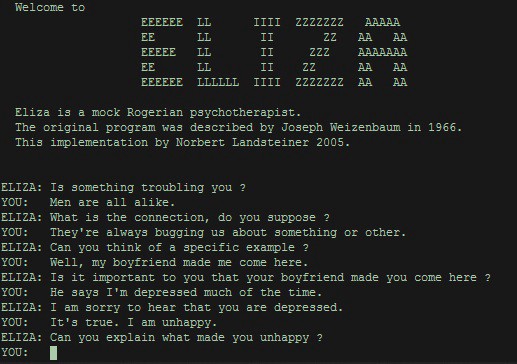
Image source: Wikipedia
ELIZA was able to simulate conversation but was not capable of learning.
The feedback that ELIZA received would not alter the behaviour of the program in the future. This limited its ability to mimic actual human conversation.
After five decades, chatbots have come a long way. In companies of 1–50 people, using chatbots has been shown to cut customer service costs by 30%.
Sounds great, right? Having a computer handle those mundane service requests can save time and resources.
Well, a study of 6,200 customers of financial services firms found that using chatbots lowered sales by 80%.
It’s true that using chatbots saved time because humans on staff would not have to handle incoming service requests. However, they also lost the opportunity to ask follow up questions. The firm’s ability to cross-sell other services was drastically reduced.
Automation Gives the Illusion of Customer Service
The promise of technology is that you can reach anyone, anywhere, anytime. But does this communication strengthen a relationship, or damage it?
Relationships require time. People can tell when you try to automate building a relationship, and it turns them off.
It’s true, you can automate the simplest steps in growing and maintaining a relationship. But if you don’t balance that automation with authentic connection, people will treat you like a bot.
Pouting Into the Void
The biggest problem with automation is it can create negative experiences that you never hear about.
When someone gets frustrated with your chatbot or sneers at your automated email message, does it make a sound?
Studies have shown that 12 or more positive experiences are needed to make up for one unresolved experience. 68% of B2B customers are lost because of perceived apathy.
Automation is necessary to stay productive. But too much automation can damage your relationships with your audience.
Automation Fails: Calls and Cards
Consider the difference between answering a robocall and a personal call.
Imagine answering your phone, and you are greeted by an automated voice message. There is very little incentive for you to give your full attention, or to follow its instructions. But if someone calls you personally, and asks for you by name, and takes time and effort to engage with you as a human, it is much more likely that you’ll listen to what they have to say.
You may have been sent an automated birthday card before. SendOutCards is one of the internet companies that automates the printing and sending of birthday cards. And I don’t know about you, but I’ve always found those a little disingenuous.
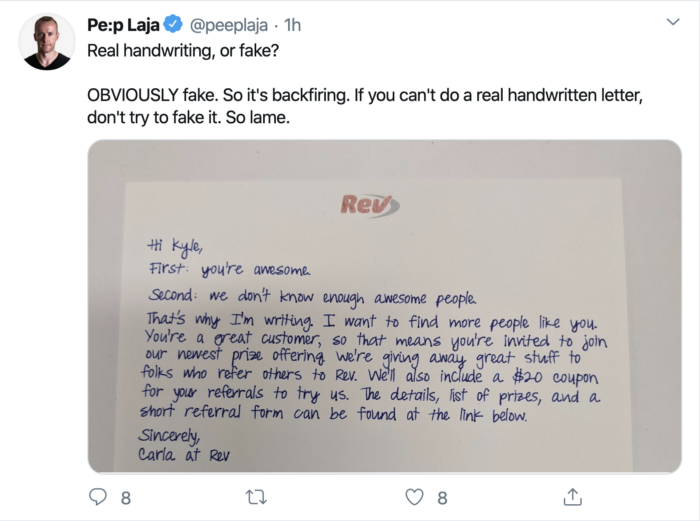
Tweet by @peeplaja
I feel the same. I am a lifelong sender of handwritten notes. I believe that the time and effort that it takes to write and send a handwritten note has a much greater impact than something that I clicked to send.
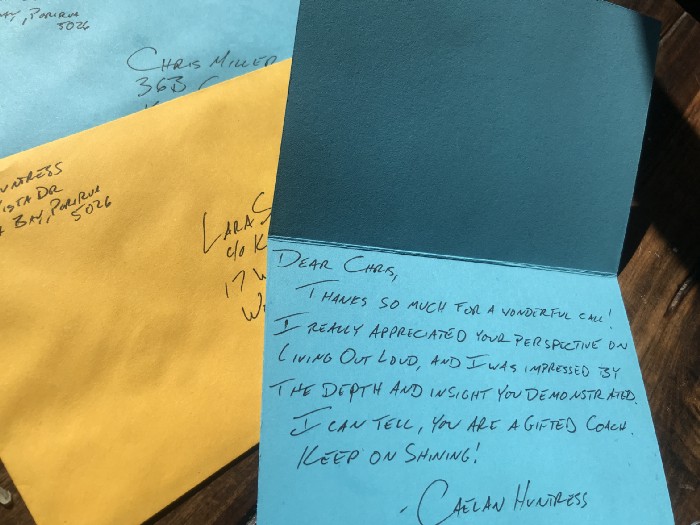
Photo by the author
The Real Difference Between Authenticity and Automation Is Time and Effort
If you can balance authenticity against automation, you can communicate with a lot of people quickly. But too much automation ruins your authenticity.
When I see someone has put in time and effort — through referencing something I recently published, or making a joke about something funny in my LinkedIn profile — I am sure to give their request a bit of extra attention as a reward.
But if I can tell, at first glance, that a request is fully and totally automated, I know I can safely ignore it.
Here’s an example: I subscribe to newsletters with my first name in all caps. Since I’m a marketer, and I study email marketing, I subscribe to a lot of newsletters. As of this writing, I have 453,051 unread messages. One day I received this in my inbox:
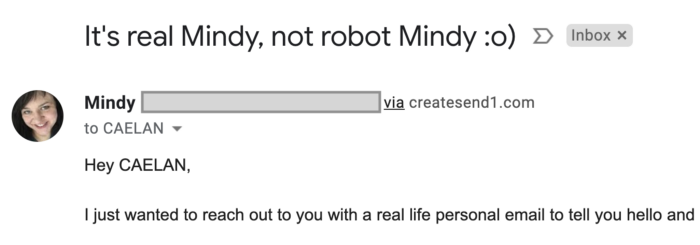
Screenshot by the author
Three days after I subscribed to her list, I got this automated email masquerading as an authentic email. I could immediately tell, because of how I subscribed to her system. My relationship with her was shown to be completely inauthentic.
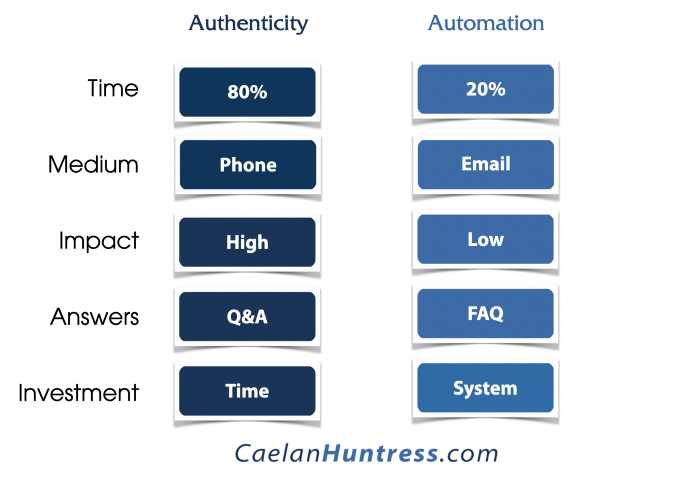
Image by the author
Automate 80% of Your Posts, and Spend 80% of Your Time on the Authentic 20%
The variety of social media platforms can be overwhelming. So I recommend that you pick one platform where you show up authentically, and automate the rest.
You can specialise in your favourite social media platform. Automatically republish onto all the others on future days. All you need is a process.
I use something called a Repurpose Matrix that allows me to spend 30 minutes on social media every week. That activity translates into 30 posts, across six different social media platforms, every week.
Those 30 minutes are when I create the Ghost in the Machine.

Image by the author
I post once on Instagram, and it automatically posts to Facebook, and WordPress, and Twitter, and LinkedIn. Because I like Instagram, that’s where I like to show up and spend my time.
I can create a post once on Instagram, and IFTTT delivers it to all the other platforms. This means that I can automate where I show up, and be authentic about how I show up.
If I spent just as much time on each individual platform as I spent on Instagram, I would get exhausted. By picking one platform and automating the rest, I’m preserving my time and attention for the work that really needs to get done.
Find the Best Social Media Automation Balance for You
You can’t broadcast a TV show on every channel at the same time.
Syndication will vary how often reruns are shown to an audience. If you have one show on one channel at one time, you can have it delivered to other channels at different times.
That’s what a repurpose matrix does. It plans out your content in advance, deciding when and where that first post is going to be syndicated.
You can syndicate across platforms with automated tools like IFTTT, or you can hire a VA. A Virtual Assistant can manually post to your accounts at the days and times you decided in advance.
Creating a Ghost in the Machine does take some time and effort. Once your automation system is ready, you can preserve your attention and creativity for what’s most important: creating authentic content.
Automate what you can, but stay authentic where it matters.
This article is an excerpt from my book, ‘Marketing Yourself.’ You can read the whole book here.




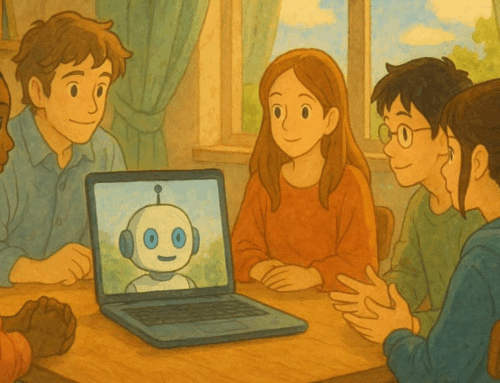
Leave A Comment